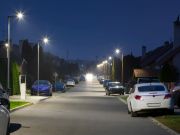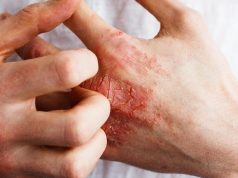Also, outdoor artificial nighttime light associated with higher risk for mental health disorders in adolescents
FRIDAY, Aug. 14, 2020 (HealthDay News) — Higher levels of outdoor artificial light at night (ALAN) are associated with less favorable sleep patterns as well as mood and anxiety disorders in adolescents, according to a study published online July 8 in JAMA Psychiatry.
Diana Paksarian, Ph.D., from the National Institute of Mental Health in Bethesda, Maryland, and colleagues evaluated associations of outdoor ALAN with sleep and mental health among U.S. adolescents. The analysis included 10,123 adolescents (51.3 percent boys; mean age, 15.2 years) participating in the National Comorbidity Survey-Adolescent Supplement (February 2001 through January 2004).
After adjusting for sociodemographic characteristics as well as area-level population density and socioeconomic status, the researchers found that higher ALAN levels were associated with later weeknight bedtime. Further, those in the lowest quartile of ALAN reported the longest weeknight sleep duration. There was a positive association between ALAN and prevalence of past-year mood and anxiety disorder, with each median absolute deviation increase in ALAN associated with higher odds of mood disorder (odds ratio [OR], 1.07; 95 percent confidence interval [CI], 1.00 to 1.14) and anxiety disorder (OR, 1.10; 95 percent CI, 1.05 to 1.16). There were additional associations with bipolar disorder (OR, 1.19; 95 percent CI, 1.05 to 1.35), specific phobias (OR, 1.18; 95 percent CI, 1.11 to 1.26), and major depressive disorder or dysthymia (OR, 1.07; 95 percent CI, 1.00 to 1.15).
“Although environmental light exposure is only one factor in a more complex network of influences on sleep and behavior, it is likely to be an important target for prevention and interventions in adolescent health,” a coauthor said in a statement.
Abstract/Full Text (subscription or payment may be required)
Copyright © 2020 HealthDay. All rights reserved.








